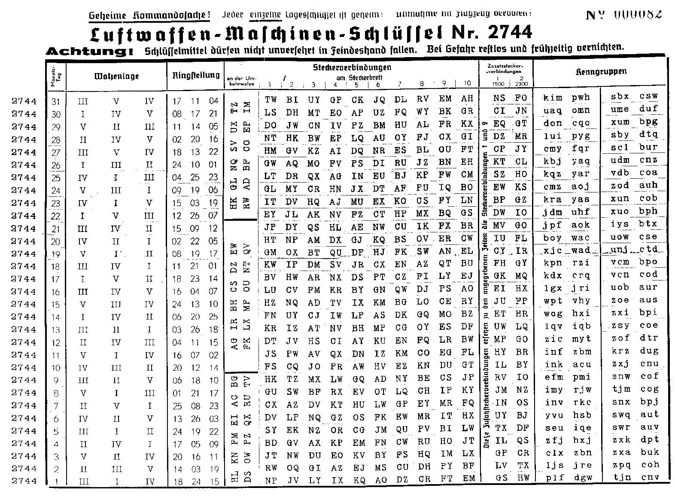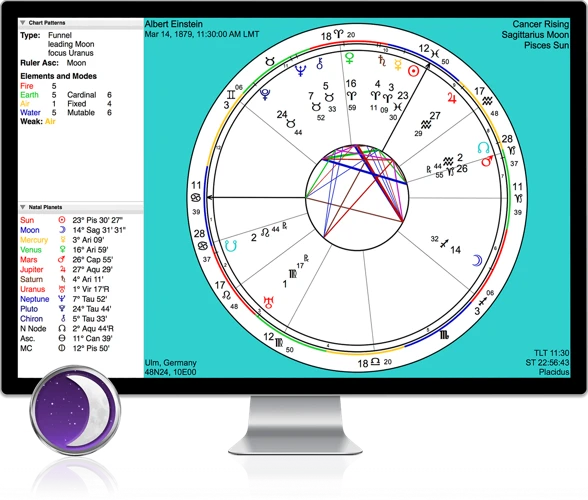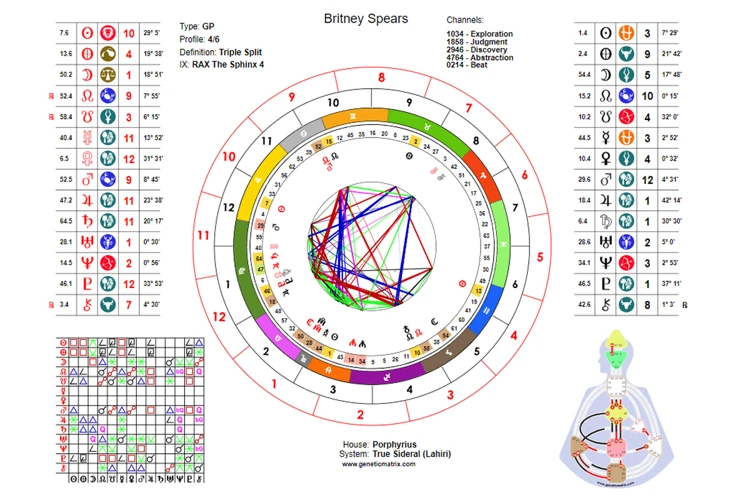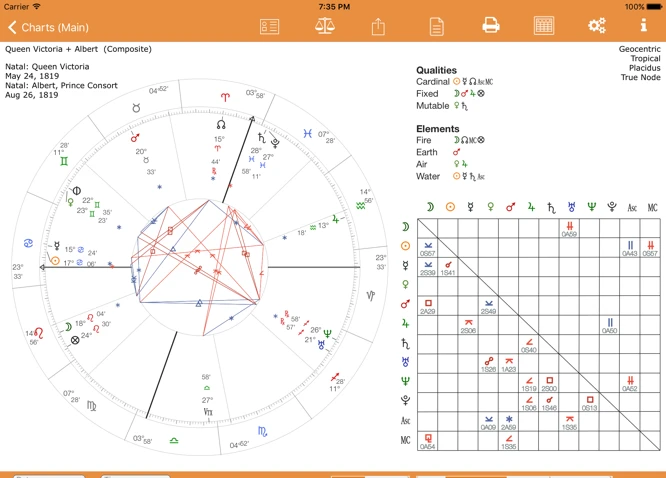Astrology enthusiasts often turn to composite charts to gain deeper insights into the dynamics of their relationships. These unique charts provide a fascinating way to explore the energies and potential of a partnership by combining the birth data of two individuals. Whether you’re curious about a romantic relationship, a business partnership, or a friendship, understanding how to calculate and interpret a composite chart can provide valuable information about the compatibility and challenges that may arise. In this comprehensive guide, we will walk you through the step-by-step process of calculating composite charts in astrology and help you unlock the secrets hidden within these celestial maps. So, grab your birth data, open up your astrology software or website, and get ready to dive into the fascinating world of composite charts.
What is a Composite Chart?

A composite chart is a unique astrological tool used to analyze the dynamics and potential of a relationship between two individuals. It is created by combining the birth data of two people, typically in the form of a midpoint chart. The composite chart acts as a representation of the relationship itself, allowing astrologers to gain insights into the overall energy, compatibility, and challenges that may arise between the two individuals. Rather than focusing on individual characteristics, the composite chart explores the interaction and synthesis of the two individuals as a whole. This chart is particularly useful for examining the strengths and weaknesses of a partnership, whether it’s a romantic relationship, a business venture, or a friendship. By examining the planetary positions, aspects, and house placements in the composite chart, astrologers can uncover valuable information about the overall dynamics and potential of the relationship. To start exploring astro composite charts, gather the birth data of both individuals and prepare to unlock the secrets hidden within this celestial map.
Definition
A composite chart is a unique astrological tool that combines the birth data of two individuals to create a single chart representing their relationship. The composite chart is calculated by finding the midpoint between the two individuals’ natal chart placements. This midpoint method allows astrologers to analyze the shared energy and potential of the partnership. The composite chart provides insights into how the individuals function as a unit, highlighting the strengths, challenges, and overall compatibility of the relationship. By examining the planetary positions, aspects, and house placements in the composite chart, astrologers can gain a deeper understanding of the dynamics at play. This enables them to offer valuable insights into the relationship and its potential outcomes. Whether exploring the harmonious aspects that foster intimacy or the challenging aspects that require growth and compromise, the composite chart is a powerful tool for delving into the intricacies of any partnership. To learn more about analyzing composite charts, you can refer to our guide on analyzing composite charts and family dynamics.
Importance of Composite Charts
The importance of composite charts lies in their ability to provide a deeper understanding of the dynamics and potential of a relationship. While individual birth charts offer valuable insights into a person’s character, desires, and motivations, the composite chart focuses on the energy created when two individuals come together. It serves as a blueprint for the partnership, offering a unique perspective on the strengths, challenges, and compatibility of the relationship. Understanding the dynamics of a relationship through a composite chart can help individuals navigate their interactions more effectively, gain insights into areas of compatibility and potential challenges, and identify areas of growth and harmony. By examining the planetary aspects, placements, and house positions within the composite chart, astrologers and individuals involved can gain a deeper understanding of the overall dynamics and potential of the relationship. So, whether you’re exploring a new romance, assessing a business partnership, or trying to strengthen a friendship, delving into the world of interpreting composite charts can provide valuable insights and help you navigate the intricacies of your connection with another person.
Collecting Birth Information

To calculate a composite chart, you’ll first need to collect the birth information of both individuals involved. This includes their birth dates, times, and locations. The birth dates are essential for determining the positions of the planets at the time of birth. It’s important to obtain accurate birth times, as this information influences the accuracy of the chart, especially when it comes to house placements and aspects. Many individuals have their birth times recorded on their birth certificates, but if you or the person you’re working with doesn’t have this information readily available, you may need to reach out to the respective registrar’s office or consult other reliable sources such as parents or family members. Keep in mind that an approximate birth time is better than none at all but aim for as much precision as possible. Additionally, you’ll need the birth locations—the city, state, and country—so that the astrology software or website can accurately calculate the planetary positions. Once you have gathered all the necessary birth information, you’re ready to move on to the next step of creating a composite chart.
Gather Birth Dates, Times, and Locations
To calculate a composite chart, you will need to gather the birth dates, times, and locations of both individuals involved in the relationship. Start by asking each person for their exact date of birth, including the month, day, and year. The accuracy of the birth date is crucial, as even a slight mistake can result in an inaccurate composite chart. Next, inquire about the exact time of birth. The time of birth should ideally be recorded down to the minute, as it greatly impacts the accuracy of the chart. If someone is unsure about their exact time of birth, encourage them to check their birth certificate or consult with their parents or other family members who may have this information. Lastly, obtain the birth location of each individual. The city, state, and country of birth are necessary to calculate an accurate composite chart. To ensure the precision of the chart, it is essential to have the birth information as precise as possible for both individuals. Once you have gathered the birth dates, times, and locations, you can move on to the next step: researching accurate birth data.
Researching Accurate Birth Data
Researching accurate birth data is a crucial step in calculating composite charts. To ensure the accuracy and reliability of the chart, it’s important to gather precise birth information for both individuals involved. Here are some key points to consider when researching birth data:
1. Birth Dates: Obtain the exact dates of birth for both individuals. Double-check for any potential errors, such as mixing up the month or day.
2. Birth Times: The birth time of each person is essential for an accurate chart. It’s important to obtain the exact time of birth, down to the minute if possible. Keep in mind that even small variations in birth times can impact the interpretation of the chart.
3. Birth Locations: Note the birthplaces of both individuals. The city, state, and country of birth are necessary to accurately calculate the composite chart. Be precise in locating the birthplace, as different cities or towns with similar names can result in different astrological calculations.
When researching accurate birth data, it’s recommended to verify the information with reliable sources. This can include birth certificates, hospital records, or family members who were present during the birth. Online databases and astrological websites can also assist in finding birth data, but it’s essential to ensure the credibility and accuracy of the sources. Taking the time to gather precise and reliable birth information is vital for generating an accurate composite chart and obtaining insightful interpretations.
Setting up an Astrology Software or Website

When it comes to setting up an astrology software or website to calculate composite charts, it’s important to choose a reliable and accurate platform. There are several options available that offer astrology software or online tools specifically designed for chart calculations. Look for a platform that has a good reputation in the astrological community and offers a wide range of features and customization options. Some popular astrology software programs include Solar Fire, Kepler, and Astrodienst. These programs allow you to input the birth data of both individuals, including their dates, times, and locations of birth. Once you have entered the necessary information, you can then generate a composite chart. If you prefer to use an online website, websites like Astrodienst or AstroSeek provide free chart calculation services. Simply input the birth data and follow the prompts to generate the composite chart. Remember to double-check the accuracy of the birth data before proceeding, as even a minor mistake can significantly impact the resulting chart. So, choose your preferred astrology software or website, enter the birth data accurately, and get ready to dive into the fascinating world of composite chart analysis.
Choose a Reliable Astrology Software or Website
When it comes to calculating composite charts, it is crucial to choose a reliable astrology software or website. There are numerous options available, so it is essential to select one that suits your needs and provides accurate calculations. Look for software or websites that have positive user reviews and a good reputation in the astrology community. Many astrology software programs offer comprehensive features, including the ability to generate composite charts. Some popular options include AstroSeek, Solar Fire, and Astro.com. These platforms typically have user-friendly interfaces and provide detailed interpretations of the composite chart. Consider the specific features you require, such as the ability to customize house systems, aspect orbs, or planetary calculations. Additionally, ensure that the software or website you choose supports the entry of accurate birth data, including date, time, and location. Taking the time to choose a reliable astrology software or website will ensure accurate and insightful results when generating and analyzing composite charts.
Enter Birth Data and Generate Composite Chart
To generate a composite chart, you will need to enter the birth data of both individuals into a reliable astrology software or website. Begin by inputting the accurate birth dates, times, and locations of both individuals. It is essential to have precise birth information, as even a slight variation in birth time can affect the accuracy of the composite chart. Once all the necessary data has been entered, select the option to generate a composite chart. The software or website will then calculate the planetary positions and aspects based on the combined birth data, producing a unique composite chart that represents the relationship between the two individuals. Some astrology programs offer additional features, allowing you to customize the chart and generate specific interpretations based on different astrological techniques. Take your time exploring the different options provided by the software or website to ensure you get the most accurate and comprehensive composite chart analysis. With the click of a button, you can unlock a wealth of insights and information about the dynamics of the relationship. It’s important to note that there are several reliable astrology software and websites available, so choose one that suits your needs and preferences.
Analyzing the Composite Chart

When analyzing a composite chart, there are several key components that astrologers focus on to gain a deeper understanding of the relationship dynamics. These components include the aspects and planetary placements, the house positions, and the dominant elements or modalities.
1. Understanding the Aspects and Planetary Placements: Start by examining the aspects between the planets in the composite chart. Look for conjunctions, oppositions, trines, squares, and other aspects, as they reveal the energetic dynamics between the two individuals. Pay attention to any planets that are heavily aspected, as they can indicate areas of strength or challenges in the relationship. Additionally, analyze the placements of the personal planets (such as the Sun, Moon, Venus, and Mars) as they give insights into the emotional and relational aspects of the partnership.
2. Examining the House Positions: The house positions shed light on the areas of life where the relationship will likely manifest and have the greatest impact. Each house represents a different aspect of life, such as relationships, career, home, and communication. Analyzing the house positions in the composite chart allows astrologers to understand the specific themes and areas of focus within the relationship.
3. Identifying Dominant Elements or Modalities: The dominant elements (fire, earth, air, and water) and modalities (cardinal, fixed, and mutable) in the composite chart provide additional insights into the relationship’s energy and temperament. Look for a balance or imbalance of elements and modalities, as they can indicate the overall compatibility and dynamics between the two individuals.
By carefully analyzing these components of the composite chart, astrologers can paint a comprehensive picture of the relationship’s potential, strengths, and areas of challenge. It is important to consider each element holistically and interpret them within the context of the individuals involved and their unique dynamics. To learn more about analyzing composite charts, you can explore interpreting composite charts and discover the intricacies of relationship astrology.
Understanding the Aspects and Planetary Placements
To fully analyze a composite chart, it is crucial to understand the aspects and planetary placements. Aspects refer to the angular relationships between different planets in the chart, indicating how they interact and influence each other. These aspects can be categorized as harmonious or challenging, depending on their nature. Harmonious aspects, such as trines and sextiles, indicate ease and compatibility between the energies of the planets involved. Challenging aspects, such as squares and oppositions, highlight areas of tension and potential conflict.
By examining the aspects in the composite chart, you can gain insights into the overall energy of the relationship. For example, if there are many harmonious aspects, it suggests a harmonious and supportive partnership. On the other hand, an abundance of challenging aspects may indicate a relationship that requires effort and communication to navigate potential conflicts.
In addition to aspects, understanding the planetary placements in the composite chart is crucial. Each planet represents different energies and qualities, and their placements indicate how these energies manifest within the relationship. For example, the placement of Venus can provide insights into the romantic and affectionate dynamics, while Mars represents passion and assertiveness.
To better understand the aspects and planetary placements, it can be helpful to create a table or list to visually organize the information. By noting down the aspects and planetary positions, you can easily identify patterns and themes within the composite chart. This analysis allows you to delve deeper into the nuances of the relationship and gain a more comprehensive understanding of its dynamics.
Examining the House Positions
Examining the house positions in a composite chart is a crucial step in understanding the dynamics of a relationship. The house positions indicate the areas of life that are most influenced by the partnership and shed light on the specific areas where the relationship’s energies are likely to manifest. Each house in the composite chart represents a different aspect of life, and the planetary placements within these houses give insight into the focus and themes of the partnership.
Here is a breakdown of the house positions and their potential interpretations in the composite chart:
1. First House: Represents the overall identity and outward expression of the relationship. Planets in the first house may indicate the personality traits and characteristics that are most prominent in the partnership.
2. Second House: Reflects the shared values, resources, and material possessions between the individuals. Planets in the second house may indicate financial matters or areas where the partnership focuses on building stability and security.
3. Third House: Represents communication, intellectual pursuits, and everyday interactions. Planets in the third house may indicate a lively exchange of ideas, shared interests, or the importance of effective communication in the relationship.
4. Fourth House: Reflects the home life, family dynamics, and emotional undercurrents of the partnership. Planets in the fourth house may indicate the nurturing and supportive aspects of the relationship or potential issues related to family dynamics.
5. Fifth House: Represents creativity, romance, pleasure, and self-expression. Planets in the fifth house may indicate a playful and passionate dynamic within the relationship, or highlight areas where the partnership finds joy and creative fulfillment.
6. Sixth House: Reflects the practical aspects of life, work, and daily routines. Planets in the sixth house may indicate a sense of responsibility, shared tasks, or the importance of structure and organization in the partnership.
7. Seventh House: Represents partnerships, marriage, and close relationships. Planets in the seventh house are particularly significant in the composite chart as they directly influence the relationship itself, offering insights into the nature of the partnership.
8. Eighth House: Reflects shared resources, intimate connections, and transformative experiences. Planets in the eighth house may indicate deep emotional bonds, power dynamics, or areas where the individuals undergo major transformations together.
9. Ninth House: Represents higher education, travel, philosophy, and belief systems. Planets in the ninth house may indicate a shared interest in expanding knowledge and exploring new horizons or highlight areas where the partnership emphasizes spiritual or philosophical growth.
10. Tenth House: Reflects career, public reputation, and long-term goals. Planets in the tenth house may indicate a shared ambition, professional collaborations, or the influence of the partnership on each individual’s public image.
11. Eleventh House: Represents friendship, social networks, and group activities. Planets in the eleventh house may indicate shared ideals, a sense of community, or the importance of social connections within the partnership.
12. Twelfth House: Reflects spirituality, hidden strengths, and unconscious patterns. Planets in the twelfth house may indicate a deep spiritual connection or areas where the partnership may face challenges related to emotional healing and releasing past baggage.
Analyzing the house positions in the composite chart allows astrologers to investigate specific areas of life that are likely to be influenced by the partnership, providing valuable insights into the overall dynamics and potential challenges of the relationship.
Identifying Dominant Elements or Modalities
When analyzing a composite chart, it is important to identify the dominant elements and modalities present. The elements refer to fire, earth, air, and water, while the modalities represent the cardinal, fixed, and mutable qualities. Identifying the dominant elements or modalities can provide valuable insights into the overall energy and dynamics of the relationship. For example, if there is a predominance of fire elements, the relationship may be characterized by passion, energy, and a strong drive for individuality. On the other hand, an abundance of earth elements can indicate stability, practicality, and a focus on material and financial aspects of the relationship. Additionally, understanding the modalities can shed light on the relationship’s ability to adapt and initiate change. For instance, a dominant mutable modality suggests flexibility, adaptability, and a tendency to go with the flow. By recognizing the dominant elements and modalities in the composite chart, astrologers can gain a deeper understanding of the relationship’s core energies and how they may influence the dynamics between the individuals involved. This information can be utilized to provide valuable insights into the strengths, challenges, and overall compatibility of the partnership.
Interpreting the Composite Chart
When it comes to interpreting the composite chart, there are several key factors to consider. One important aspect is comparing the individual birth charts of the two individuals to the composite chart. By analyzing the similarities and differences between the individual charts and the composite chart, astrologers can gain deeper insights into the unique dynamics of the relationship. It’s crucial to pay attention to any significant alignments or aspects that stand out in the composite chart, as these can shed light on the strengths and challenges within the partnership. Additionally, exploring the different areas of compatibility and potential challenges is vital in understanding the overall dynamics of the relationship. By examining the placements of the planets in the composite chart, astrologers can identify the areas of harmony, tension, and growth within the partnership. Another important aspect of interpretation is examining the house positions in the composite chart. These house placements can offer insights into the various areas of life that the relationship will impact and excel in. It’s also worthwhile to identify any dominant elements or modalities within the chart, such as fire, earth, air, or water. This can provide further insights into the overall energy and temperament of the relationship. By considering these elements and analyzing the composite chart as a whole, astrologers can provide a comprehensive interpretation that illuminates the potentials and challenges within the relationship. To delve deeper into the interpretation of composite charts, you can explore additional resources and guidance on interpreting composite charts.
Comparing Individual Birth Charts to the Composite Chart
When interpreting the composite chart, it is important to compare the individual birth charts of both individuals to gain a deeper understanding of the dynamics at play. By analyzing the individual birth charts alongside the composite chart, astrologers can identify the unique strengths, challenges, and patterns that each person brings to the relationship. Start by examining the planetary placements in the individual birth charts, focusing on any significant aspects or conjunctions that may appear in the composite chart. These aspects can provide insights into the specific energies and influences each individual contributes to the partnership. Additionally, explore the house placements in the individual birth charts and compare them to the corresponding house placements in the composite chart. This can shed light on the areas of life that may be emphasized or challenged within the relationship. Consider creating a table or list to organize the comparisons, noting any key similarities or differences between the individual birth charts and the composite chart. This process allows for a more holistic understanding of the relationship dynamics and can provide valuable insights into the strengths and challenges that may arise. For more information on interpreting composite charts, visit our article on interpreting composite charts.
Exploring Areas of Compatibility and Potential Challenges
When interpreting a composite chart, one of the primary objectives is to explore the areas of compatibility and potential challenges within the relationship. The composite chart provides valuable insights into the dynamics between two individuals, highlighting the areas where their energies align harmoniously and where conflicts may arise. By examining the planetary aspects in the chart, astrologers can determine the compatibility between the two individuals and identify the areas where they may find common ground. Favorable aspects, such as trines and sextiles, indicate areas of ease and mutual understanding. These aspects suggest that the individuals are likely to support and complement each other in those specific areas of life. On the other hand, challenging aspects, such as squares and oppositions, reveal areas of tension and potential conflict. These aspects indicate that the individuals may have different approaches, goals, or values in those areas, leading to potential challenges and clashes. By understanding these dynamics, individuals can navigate the relationship with greater awareness and work towards finding balance and harmony. To delve deeper into the interpretation of composite charts and gain insights into your own relationships, explore the dedicated resources on interpreting composite charts available in the astrological community.
Conclusion
In conclusion, understanding how to calculate and interpret composite charts in astrology can provide valuable insights into the dynamics of relationships. Composite charts offer a unique way to explore the energy and potential of a partnership by combining the birth data of two individuals. By analyzing the aspects, planetary placements, and house positions in the composite chart, astrologers can uncover important information about compatibility, challenges, and areas of synergy within the relationship. It is a powerful tool for exploring the dynamics of romantic relationships, business partnerships, and friendships. Comparing individual birth charts to the composite chart allows for a deeper understanding of how each person contributes to the overall energy of the relationship. By interpreting composite charts, individuals can gain insight into the areas of compatibility and potential challenges they may face together. So, whether you’re seeking to understand your love life or evaluate a business partnership, exploring the mysteries of composite charts can provide valuable guidance along the way.
Frequently Asked Questions
What are the key components of a composite chart?
A composite chart consists of planetary positions, aspects, house placements, and other astrological factors that represent the combined energy of two individuals in a relationship.
Can I calculate a composite chart for any type of relationship?
Yes, composite charts can be calculated for any type of relationship, whether it’s romantic, familial, platonic, or business-oriented.
Do I need the birth times of both individuals to calculate a composite chart?
Having the accurate birth times of both individuals is ideal for a more precise analysis. However, if the birth times are unknown, a composite chart can still be calculated using the dates and approximate times.
Which astrology software or websites can I use to calculate a composite chart?
There are numerous reliable astrology software and websites available, some popular options being AstroSeek, Astro.com, and Astrodienst. Choose one that you feel comfortable with and provides composite chart calculations.
How do I interpret the aspects in a composite chart?
Interpretation of aspects in a composite chart involves analyzing the interactions between planets. Harmonious aspects indicate ease and compatibility, while challenging aspects suggest potential areas of tension and growth within the relationship.
What do the house placements indicate in a composite chart?
The house placements in a composite chart highlight the areas of life and experiences that are most significant and affected by the relationship. They provide insights into shared goals, challenges, and patterns within the partnership.
How can I compare individual birth charts to the composite chart?
To compare individual birth charts to the composite chart, examine the aspects and planetary positions in both charts. This analysis helps identify how the individuals contribute to the overall dynamics and energy of the relationship.
What is the significance of dominant elements or modalities in a composite chart?
Dominant elements or modalities in a composite chart indicate the prevailing energies and patterns within the relationship. This understanding helps uncover the overall nature and potential challenges of the partnership.
Can a composite chart accurately predict the outcome of a relationship?
A composite chart provides insights into the strengths and challenges of a relationship but does not predict the outcome. It offers valuable guidance for understanding the dynamics and potentials, but the ultimate direction of the relationship is determined by the choices and actions of the individuals involved.
Do astrologers use composite charts only for romantic relationships?
No, astrologers use composite charts for a wide range of relationships, including romantic, familial, platonic, and business partnerships. These charts offer valuable insights into the dynamics and potentials of any type of relationship.








